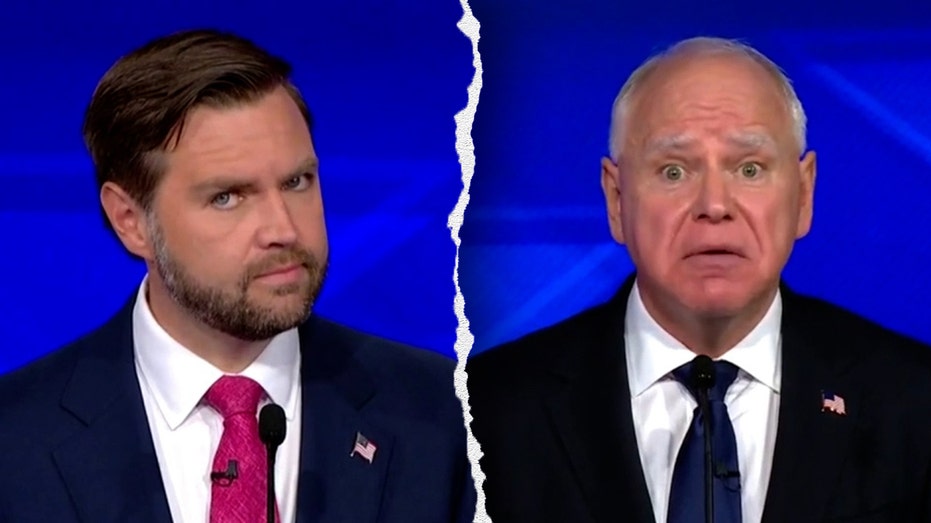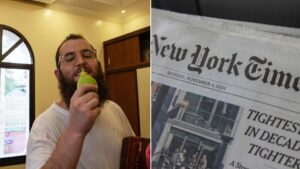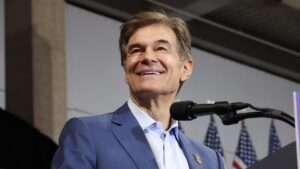
A body language expert wrote an article in Politico analyzing the appearance and body language of Sen. JD Vance and Minnesota Gov. Tim Walz during the debate.
Female voters who watched the CBS News Vice Presidential Debate on Tuesday may have viewed Ohio Sen. JD Vance’s beard as a sign of toxic masculinity, according to one body language expert.
Vance, the Republican vice presidential nominee, faced off against Democratic vice presidential nominee and Minnesota Gov. Tim Walz at the Tuesday night debate, sparring for 90 minutes on a wide range of issues including immigration, the economy and abortion.
Former FBI agent and body language expert Joe Navarro analyzed each candidate’s body language at the event for Politico Magazine, giving his opinion about how they presented themselves on stage.
The first thing Navarro noticed was Vance’s facial hair. He claimed the “masculine” trait could turn off female voters.
VANCE OOZED CONFIDENCE COMPARED TO JITTERY WALZ, BODY LANGUAGE EXPERT SAYS: ‘CAPTAIN OF THE SHIP’
“As POLITICO Magazine has noted before, Vance is the first White House wannabe to wear facial hair in 80 years. Our appearance is fundamental to our body language, and research indicates that voters see beards as (surprise, surprise) more masculine,” Navarro wrote. “That can be positive to some, reading as strength and competence. But to others, especially women, it can be negative, conveying aggression and opposition to feminist ideals.”
Navarro isn’t the only media commentator to associate the Republican ticket with negative perceptions of masculinity. Since the Harris-Walz ticket emerged, several journalists, including MSNBC contributor Katty Kay, have argued that Republicans appeal to men with a more “macho,” what they consider, outdated version of masculinity.
MSNBC host Jen Psaki and The Washington Post’s Catherine Rampell have also made the case that the Democratic ticket appeals to men who are more “supportive” of women.
While critiquing Vance’s beard, Navarro praised Walz for his bugged-eyed expression throughout the debate, saying it “showed his passion” on the issues.
“When Walz felt especially passionate about something, he’d open his eyes wide as saucers. Eye-popping can sometimes be a sign of surprise, but for Walz, it simply revealed his emotional intensity,” Navarro wrote. “Early humans would have made such facial gestures to communicate strong emotions, like ‘danger is close.’ For Walz, it gave extra weight to his feelings and held our gaze.”
CLICK HERE FOR MORE COVERAGE OF MEDIA AND CULTURE
The body language expert spoke positively about how Vance used his hands to convey emotion and leadership during the debate, but claimed a “little frown” by the Republican at one point showed where his “weaknesses lie.”
“When Walz brought up Project 2025, Vance exhibited a little tell that carried a big message: a slight squinting of the eyes and a small frown. Clearly, this was a sore subject,” Navarro wrote.
“We have to guard against such behaviors in high-stakes interchanges like negotiations or, say, vice-presidential debates — they reveal to your opponent what topics you want to avoid and where your weaknesses lie,” he wrote.
At the same time, Navarro gave credit to Walz for frowning to show his disapproval while Vance was speaking.
“During a disagreement over democracy, he furrowed his glabella forcefully at what Vance was saying. Then he held his eyebrows like that, in tension, for some time. While Vance had the floor, this was a way for Walz to silently say, ‘No way, that’s not right, and I am going to challenge you on this,’” he wrote.
The only negative assessment of Walz was about his finger-wagging at the camera.
“[H]e pointed at the camera with his index finger, like Uncle Sam in those old ‘I Want You’ posters. It was a bold, almost accusatory gesture — which made it great for the poster, but can come across as almost hostile. Our brains immediately perceive a point as ‘calling us out’ — in other words, as threatening. Walz wanted our attention there, and he certainly got it,” Navarro wrote.
Both candidates displayed “Midwestern politeness” by tilting their heads and turning their bodies toward the other while speaking, the expert said.





